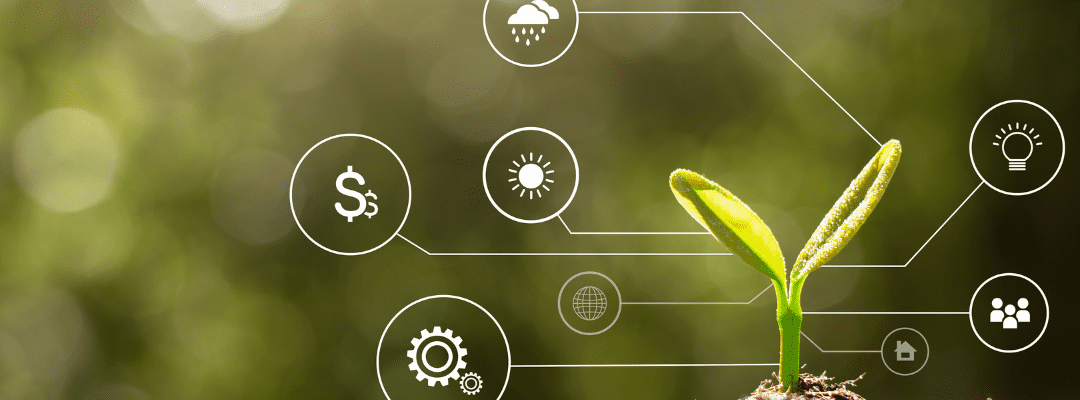In such a revolutionary industry, we are constantly seeing new ag innovations and technological solutions to hurdle the various obstacles facing agriculture. But what we’ve learned time and time again, these challenges prove just how resilient agriculture is. Whether it be to provide more accurate data or offset the side effects of climate change, these innovations work towards providing solutions that fuel macro goals for our industry – like driving sustainability initiatives ahead or augmenting food production for our world.
Maintaining the demands of the growing population with the decrease in supplies of key inputs and farmland continues to be one of the biggest concerns facing agriculture. This is where technology becomes vital in the future of agriculture. We need tools that are more efficient, accurate, and effective than the last to help achieve even more with even less.
So, let’s dive into three of the many trending ag innovations that have recently caught our eye.
Less Farmland? Enter Vertical Farming
With seemingly less farmland every day, the search for alternative growing methods treks on. In recent years, indoor (or vertical) farming has steadily grown in popularity, but is it a sustainable practice for the growing demands?
Before we dive into the politics of whether it is a sufficient practice, let’s cover exactly what indoor agriculture entails. There are a variety of variations within indoor agriculture, but the three most common forms of vertical farming include:
- Hydroponics, is the most common version of vertical farming, where plants are submerged in nutrient-rich substrate that isn’t soil (i.e., perlite and rockwool).
- Aquaponic systems, which essentially is a low-maintenance combination of hydroponics and fish farming, where fish produce nutrient rich waste that is sufficient for plant growth and is a continuously recycling process.
- Aeroponic systems where plants are grown with very little water or mist and without soil; misted with a nutrient solution using a fine sprayer to get nutrients.
All of these forms of vertical farming come with similar setbacks with the main being costs, productivity, and environmental concerns. While they may seem like these options were built around the idea of a greener, more affordable alternative to traditional agriculture, that isn’t guaranteed. These operations require hefty investments combining with other costs like labor, energy, and maintenance. Moreover, there are strict limitations on which plants can and cannot be grown in vertical farming systems basically only accommodating green leafy vegetables.
On the flip side, vertical farming offers a new alternative that could bring farming to even the largest cities. And we know that with the rapidly growing population and their associated demands we are going to see less farmland and have more mouths to feed. More systems than others, there is a sense of input reduction in terms of water and nutrients by finding more self-sufficient and sustainable options. So, with this in mind, is there a place in the future for vertical farming?
The Influence of Artificial Intelligence (AI)
Traditionally, getting agriculture data has been extremely challenging. Most of the data collection has been manual in nature, which only lends to the complexity of getting accurate and timely data.
Because agriculture as a whole is subjected to many unique variables that are often unpredictable and uncontrollable, it can make it challenging to get data that can be used once it’s collected – because often times, the story changes quite quickly.
As we have been (and continue to) battle labor challenges for the past few years, this adds to the complexity of getting data – resulting in higher costs and less available workers. Tasks like scouting fields to capture critical data are getting more difficult to do on a regular and timely basis.
Artificial intelligence has become a valid solution for agriculture. While the challenge to getting to the data has been challenging, generating the data hasn’t been – after all, the average farm generates about 500,000 data points. The question is often whether you can get to the right data.
This is where we see a lift from artificial intelligence, particularly when it’s paired with other technology like drones for aerial imaging. Once you have launched your drone, it’s pretty much smooth sailing from there, artificial intelligence takes over as the drone goes into “survey” and covers the areas you need without constantly adjusting or directing it. Then on top of that, machine learning takes in the data collected from the flight and is able to provide valuable insight into field performance and crop health. This is not only more convenient but also significantly minimizes variability in how and what data is collected.
The data being collected by artificial intelligence is strictly objective and ensures the data is as accurate and reliable as possible – and it can be captured and analyzed much faster, to help meet those demands that may require faster decisions within the season. This helps to validate outcomes and power critical decisions with more certainty.
With the help of this technology powerhouse, data collection has a sense of consistency and objectivity that lacks from manual methods – allowing you to better compare past years’ data and predict future trends.
Adding Digital to Product Development
Commodity is commonplace in agriculture; and many of the products on the market have been commoditized as they have been used for several decades. And this is often because they took a corner of the market and were quite successful.
But, in today’s world, as technology continues to become more widely adopted within the industry, these products will need a new method of differentiation in order to stand out and succeed in today’s dynamic environment. Whether its layering on a new delivery mechanism or improving the commercialization process, digital product development shines for new and old products.
This new layer focuses on delivering data-driven insights – so tying data back to the product, every step of the way, for a deeper look at performance and understanding. In doing so, it can unlock immense value throughout the agricultural value chain – from the product development leaders who can now focus on bringing the best performing products to the market; to the retail agronomists who know have the proof that demonstrates why a product may be a better option than another one on the shelf.
And let’s not forget the grower! After all, they are the end user of many of these products. By adding digital product development as a key staple for the future of ag products, it helps growers make data-driven decisions by giving them the analytics they require to understand how things are performing within the field – whether it’s within one season or comparing year-over-year performance over time. This valuable information gives the grower the ability to make decisions based on what matters most: How they can maximize yields with the resources available.
And these are just a few of what’s caught our eye over the recent months. We know there are many, many other amazing innovations occurring within the industry! Seeing the continued innovation and focus on how we can deliver against some of the biggest challenges within our world are so important for the future of agriculture.


